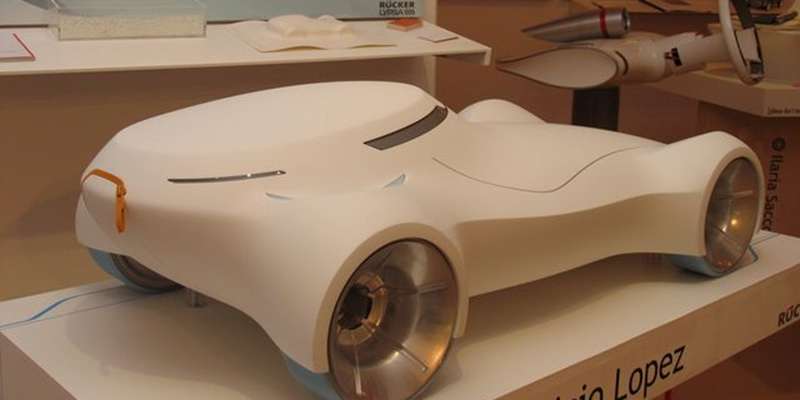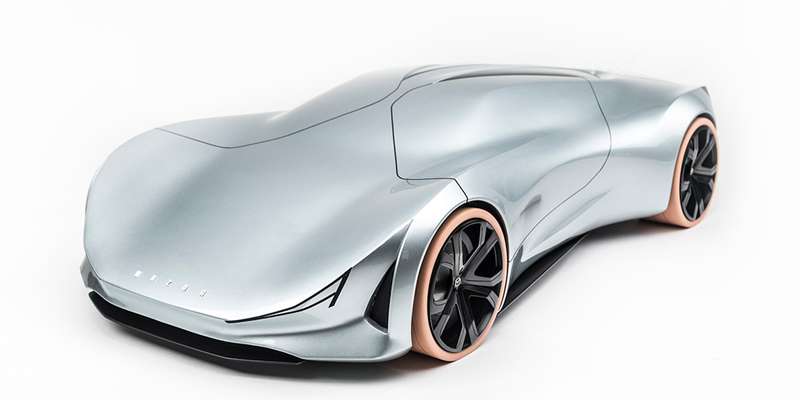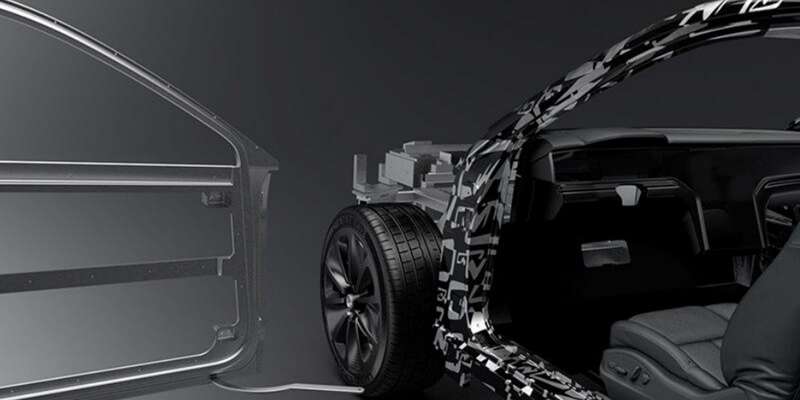Concept cars help to stretch the imagination while accelerating development. It features new designs and advanced technologies imagined for the future. Every automaker has a collection of concept cars that never made it to production, and most of these prototypes serve as design models for other vehicles that make it to production.
This article discusses what a concept car is, why and how concept cars are developed, and how automotive prototyping helps to create excellent prototype cars. Let’s get to it!
 What Is a Concept Car?
What Is a Concept Car?
A concept car is a foundational concept or the vehicle’s basic structure as designed on the drawing board or design sketch. Also known as a prototype car, it is one of the essential design stages in designing and developing new vehicles. Most automakers have various experts specializing in aspects of creating a concept car. These concept cars must meet specific standards like practicality, cost, compatibility, and safety before the design enters the production phase.
The prototype car helps to understand the actual vehicle to be launched. It could be a maker’s idea of the actual vehicle’s appearance, looks, and design. It helps to decide which form the car will be – MPV, SUV, Coupe, Hatchback, or Sedan. Furthermore, it gives the designers and pre-production team a specified scope of work. Nowadays, most designers worldwide create concepts and publish their creations on social media for the world to see.
Why Are Concept Cars Developed?
Concept car designs are made with the ideas and visions of the future in mind. Generally, they are experiments with ground-breaking technologies dreamed for the future. Indeed, most concept cars do not make it to the consumer arena; however, they serve as inspirations or design guides for other actual vehicles that come to market. These real cars often bear the characteristics of the concept cars that failed to transcend from the design or prototype stage.
Automakers typically experiment with prototype cars to reveal new-age technology, transforming their imaginations into actual products by engineering a concept model and evaluating consumers’ reactions. With the achievements in concept car development, auto enthusiasts remain informed about future possibilities. These concept cars are developed to achieve the following:
- Test feasibility, where likely consumers’ choices can help the manufacturers to improve the product before its launch.
- Serve as a potential source of publicity for the maker in auto-show appearances.
- Enable vehicle manufacturers to try and test various technologies planned for future inventions.
- Inspire by permitting car manufacturers to consider ideas that could eventually become history for the automotive industry.
Concept Car Designs: How Is It Done?
The prototype of a car is advanced in structure and concept. Concept cars usually feature expensive and unique materials like polished alloys, carbon fiber, or paper. Many concept car designs are exclusive, such as having more than four wheels, intriguing doors, or unique features that are never before seen in regular vehicles.
Generally, concept cars used to be in the form of wooden structures or models made with metal sheets which give an idea of what the car would look like. These designs provide little details on the vehicle’s powertrain and other crucial features.
 However, nowadays, the concept has become refined, making it more glamorous and complete in almost every aspect of its design. It showcases the features the actual car would have when launched, making it more popular than ever.
However, nowadays, the concept has become refined, making it more glamorous and complete in almost every aspect of its design. It showcases the features the actual car would have when launched, making it more popular than ever.
Concept cars hardly meet all the functional requirements of a normal car and do not always conform to the required geometry. Therefore, they are usually presented as new design concepts at automotive shows.
In reality, concept cars are designed for the manufacturers to foresee after researching the market opinions and customer expectations. Following this massive process, automakers design and outline the prototype car by constructing it on a computer. Then, they make a real-life model which matches the customer’s expectations.
Designing a concept car is a long process that may sometimes take years of market research, technological evolution, and consistent design enrichment before the concept wins the approval of the majority and is launched to dominate the market.
Creating Excellent Concept Cars with Rapid Prototyping Technologies
Rapid prototyping is a versatile and efficient technology source in the automotive sector. Nowadays, consumers seek innovations in the automotive industry. As a result, automotive prototyping gives consumers the benefit of taking control of their car manufacturing, and they can customize their cars to meet their tastes or desires.
Engineers and automakers use the technology to create multiple iterations of ideas for concept cars and test new technologies due to their ability to financial and technical risks. Here are some of the technologies of rapid prototyping:
3D Printing
3-Dimensional printing has been one of the most efficient and reliable manufacturing processes with significant impacts on the preliminary stages of concept car designs. Fresh ideas and innovations become the functioning prototypes of a car with the help of rapid prototyping services such as 3D printing.
It allows automakers to test the functionality of their desired products. This process involves using a giant 3D printer to create functioning models. 3D printing car parts is compatible with a wide range of materials, opening up many possibilities.
 Custom CNC Machining
Custom CNC Machining
Custom CNC machining uses 3,4 or 5-axis CNC machines to machine metal and plastic parts. It drives the creation of prototype car parts that are to achieve tight tolerances and high precision.
Also, for parts with complex designs such as engines and headlights, precision CNC machining always creates complex and highly functional prototypes and models with precise dimensions. In addition, this process ensures that your automotive parts have the best aesthetic appeal in terms of surface finish.
Vacuum Casting
Vacuum casting is an efficient and practical technique for manufacturing products faster. It allows professional engineers to produce reliable prototypes for testing using silicone molds. However, this process is most suitable for creating a small batch of prototypes.
 Concept Vehicles vs. Commercial Vehicles: What Is the Difference?
Concept Vehicles vs. Commercial Vehicles: What Is the Difference?
As discussed earlier, concept vehicles are fabricated from ideas and imaginations for the future. A concept car is a prototype of a car that aids development while testing new technologies, all of which form the basis of innovation. Creating concept cars is a step towards achieving the impossible.
For quite some time, automakers have been focused on manufacturing diesel or petrol model vehicles that appeal to consumers. However, automakers now make electrification their new focus. The goal is to have an electrified and automated future where self-driving technology takes over everything. Concept cars have no significant similarity when compared to commercial vehicles or other vehicles that make it to production, and they differ significantly due to their high production costs.
Unlike concept vehicles, commercial vehicles are available for purchase and use. In some cases, they are used for business purposes – transport of paying passengers, goods, or both. The Federal Motor Carrier Safety Administration (FMCSA) defines a commercial vehicle as any self-propelled or towed motor vehicle on a highway in the interstate business to transport passengers or goods.
A vehicle is considered commercial when registered to a company or title. Commercial cars range from small vehicles to large trucks. These may include fleet vehicles, company cars, or other vehicles used for commercial uses.
 Bring Your Concept Car into Reality at WayKen
Bring Your Concept Car into Reality at WayKen
Are you worried about bringing a concept car idea to life? WayKen is an expert in automotive prototyping and custom car parts manufacturing, and you can find us when you have an idea for a concept car.
We will create your prototype car parts that fit your idea. With advanced CNC machining and 3d printing technology, you have the flexibility to validate the concept car visually and test it functionally.
Conclusion
Concept cars are futuristic concepts that help to showcase and explore innovative ideas while sampling consumers’ opinions on various concepts, technologies, and designs. It allows automakers to try new technologies and designs to see how well they meet the necessary standards. However, with Rapid prototyping technologies, manufacturers can produce masterclass prototypes that are more likely to make it to production.
FAQs
Do concept cars exist?
Prototype cars take the spotlights at auto shows. However, many daring concept car designs hardly make it to the production stage. Generally, they have many shapes and sizes, and manufacturers make them for various reasons, costing a lot to produce.
Do concept cars get sold?
Automakers have never sold concept cars to private individuals due to legal liability, failure to meet emission regulations, and lack of safety testing.
What is the oldest concept car?
The oldest concept car is the 1938 Buick Y-Job. This car served as a way for automobiles to evolve in the coming 10 to 20 years. Y-job came with several technologies and innovative designs, including rear fenders, electric windows, headlights, etc. It is of great technical significance because it introduced the kind of tires we have in today’s vehicles.
Are concept cars drivable?
Although concept cars are incredible with their looks, they aren’t often drivable. Automakers engineer these concept cars with automotive sculpture design without practicality in mind. They build these prototype cars based on how best to actualize your dreams and imaginations of the future.




